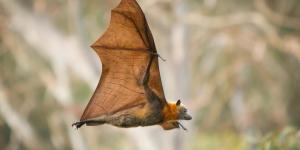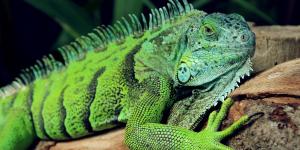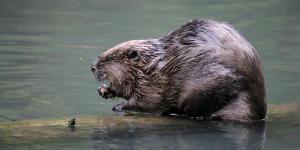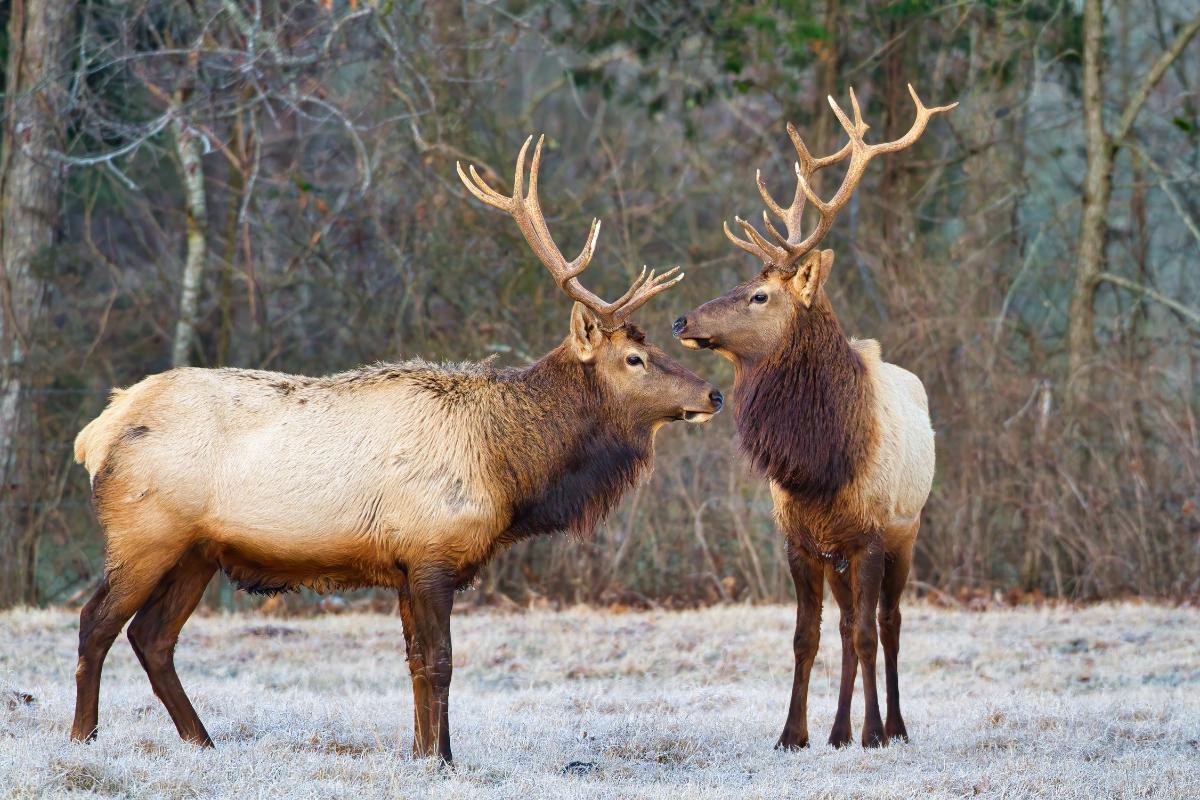Where Do Reindeer Live?

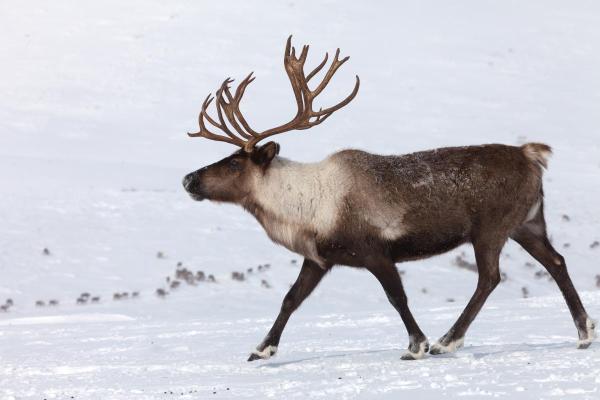
Reindeer (known as caribou in North America) are hardy animals that have adapted to some of the coldest environments on Earth. They belong to the deer family (Cervidae) and live throughout the Northern Hemisphere. Unlike other deer, both males and females grow antlers, though males develop larger ones. Their fur and hooves help them survive and move through snow-covered terrain.
In the following AnimalWised article, we'll explore where reindeer live in the wild and the environments they call home.
Distribution of reindeer
Reindeer live across the Northern Hemisphere in a circumpolar distribution. They've adapted to the cold arctic and subarctic regions across several continents. Here's where you'll find them:
North America:
In North America, wild reindeer (called caribou) live throughout Alaska, northern Canada, and Greenland. They're known for their seasonal migrations, which are, in fact, some of the longest of any land mammal. They move between tundra and forests looking for food. Their populations face pressure from habitat loss, industrial development, and climate change, which have made life harder for many herds.
Europe:
Reindeer roam Norway, Sweden, and Finland, where most are domesticated and herded by the Sami people. The Sami culture and economy have been built around reindeer for centuries.
While the Scandinavian mountains and forests make good homes for these animals, wild reindeer are less common than domesticated ones in this region.
Asia:
In Russia, particularly Siberia, reindeer thrive in large numbers. The tundra and taiga forests provide homes for both wild and semi-domesticated herds. Local communities rely on reindeer for transportation, food, and materials. However, resource development and warming temperatures have disrupted migration routes and reduced available habitat.
Greenland:
Reindeer in Greenland have made themselves at home despite the harsh arctic conditions. They've also been introduced to the Falkland Islands, Iceland, South Georgia, and the South Sandwich Islands.
Confused about how to tell apart members of the deer family? Our guide explains the key differences between these related species.
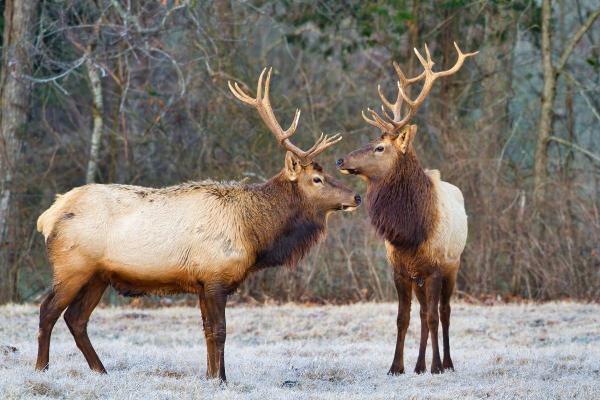
Reindeer habitat
Reindeer make their homes in several types of environments, specifically:
- Coastal plains
- Continental plains
- Mountain ranges
- Arctic islands
They range from high Arctic areas to boreal forests, including the tundra of arctic islands that can be polar deserts or semi-humid shrublands.
In North America and Russia, reindeer live in coastal plains, tundra strips along coastlines, and large grassland tundras. As herbivores with varied diets, they eat lichens, herbs, grasses, shrubs, and rushes. Their survival depends on having access to these food sources.
When winter arrives and most vegetation disappears under snow, reindeer rely heavily on lichens. Though low in protein, lichens provide carbohydrates that give reindeer energy during the coldest months.
Do reindeer live in the North Pole?
Despite what holiday stories suggest, reindeer don't actually live at the North Pole. The North Pole sits in the middle of the Arctic Ocean covered by sea ice, making it impossible for reindeer to live there.
Instead, they live in the northern regions around the Arctic Circle. This proximity to the Arctic has led to the connection between reindeer and the North Pole in Christmas traditions.
Curious about how reindeer went from arctic wildlife to Christmas symbols? Our related article explores this interesting cultural history.
Where to see reindeer in the wild?
If you want to see reindeer in the wild, visit protected areas in arctic and subarctic regions. Here are some of the best places:
North America:
- Alaska: Arctic National Wildlife Refuge
- Canada: Jasper National Park (Alberta) and Kluane National Park (Yukon)
- United States: areas near the Canadian border, like the Selkirk region in Washington state
Europe:
- Finland: Urho Kekkonen National Park in Lapland
- Norway: Rondane National Park
- Sweden: various parts of Swedish Lapland
Asia:
- Russia: Yugyd Va National Park, Wrangel Island Nature Reserve, and Putorana Nature Reserve
From woodland caribou to mountain reindeer, explore the varieties that exist across the Northern Hemisphere.
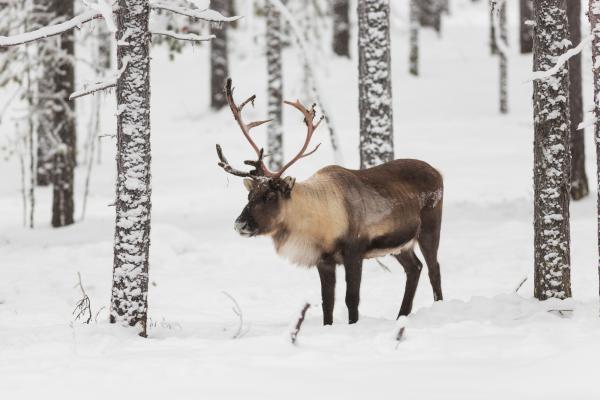
Where do reindeer migrate to?
Reindeer carry out impressive seasonal migrations. North American caribou herds travel up to 3,000 miles each year, making it the longest land migration on Earth. These migrations typically last 5-7 months, beginning in spring and ending in late fall.
In spring, pregnant females lead the herds north to calving grounds on the arctic tundra, where there are fewer predators and abundant summer food. By late August, as temperatures drop, the herds begin their return journey south to the boreal forests, where they spend winter feeding on lichens beneath the forest canopy and sheltering from harsh weather.
Different herds have established specific migration routes. The Porcupine Caribou herd migrates between Alaska and Canada's Yukon Territory, while the Western Arctic herd moves between inland Alaska and coastal regions. In Scandinavia, reindeer migrate between mountain plateaus and coastal lowlands.
It is important to note that, as the Arctic warms, these migration patterns are changing. Climate change is altering the environment faster than many reindeer herds can adapt, creating one of the biggest challenges for their survival. Unpredictable weather has made timing migrations more difficult.
Interested in other cold-weather specialists? Our companion article explores various animals that have evolved to thrive in winter conditions.
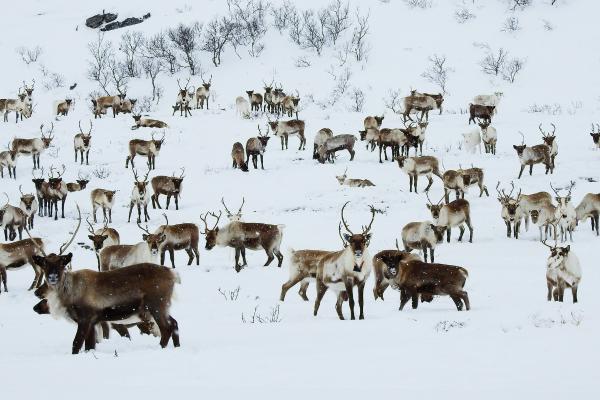
How do reindeers adapt to the Arctic?
Reindeer have evolved several especific adaptations that allow them to not just survive, but thrive in some of the world's coldest environments. Their bodies have developed specialized features perfectly that are suited to arctic and subarctic conditions.
Their double-layered coat provides insulation against freezing temperatures. The dense woolly undercoat traps body heat close to the skin, while the hollow outer hairs create an additional layer of warmth by trapping air. This insulation is so effective that reindeer can rest comfortably on snow without melting it. This is because their body heat doesn't escape through their fur to warm the ground beneath them.
Reindeer hooves show impressive seasonal adaptations. During summer, when the ground is soft and boggy, their footpads expand and soften to provide better traction on wet terrain. As winter approaches, these same footpads shrink and harden, while the outer hoof edges become more pronounced.
This transformation gives reindeer better grip on ice and helps them dig through snow to reach the lichens below. This behavior called "cratering" that's essential for winter feeding.
Reindeer eyes also change with the seasons. In summer, their eyes appear golden-amber, but in winter, they shift to a deep blue. This adaptation helps them cope with extreme light conditions, such as the nearly constant daylight of Arctic summers or the extended darkness of winters. The winter eye structure allows reindeer to detect ultraviolet light, helping them spot predators, food, and fellow reindeer against the snow.
Their noses are specially designed for extreme cold. A network of blood vessels warms inhaled air before it reaches their lungs, which helps maintain body temperature and conserve energy. These same blood vessels cool the blood heading to the brain, preventing thermal shock when reindeer drink icy water.
Even their antlers serve multiple purposes. Beyond mating displays, antlers help scrape away snow to access food and can be used for defense against predators. Female reindeer keep their antlers throughout winter, giving them an advantage over males when competing for food resources during the scarce winter months. This is because who shed theirs after mating season.
If you want to read similar articles to Where Do Reindeer Live?, we recommend you visit our Facts about the animal kingdom category.
- Gunn, A. (2016). Rangifer tarandus. IUCN Red List of Threatened Species 2016: e.T29742A22167140. https://dx.doi.org/10.2305/IUCN.UK.2016-1.RLTS.T29742A22167140.en
- National Geographic. (2022). Reindeer. National Geographic Animals. https://www.nationalgeographic.com/animals/mammals/facts/reindeer
- Shefferly, N. (2000). Rangifer tarandus. Animal Diversity Web. https://animaldiversity.org/accounts/Rangifer_tarandus/


